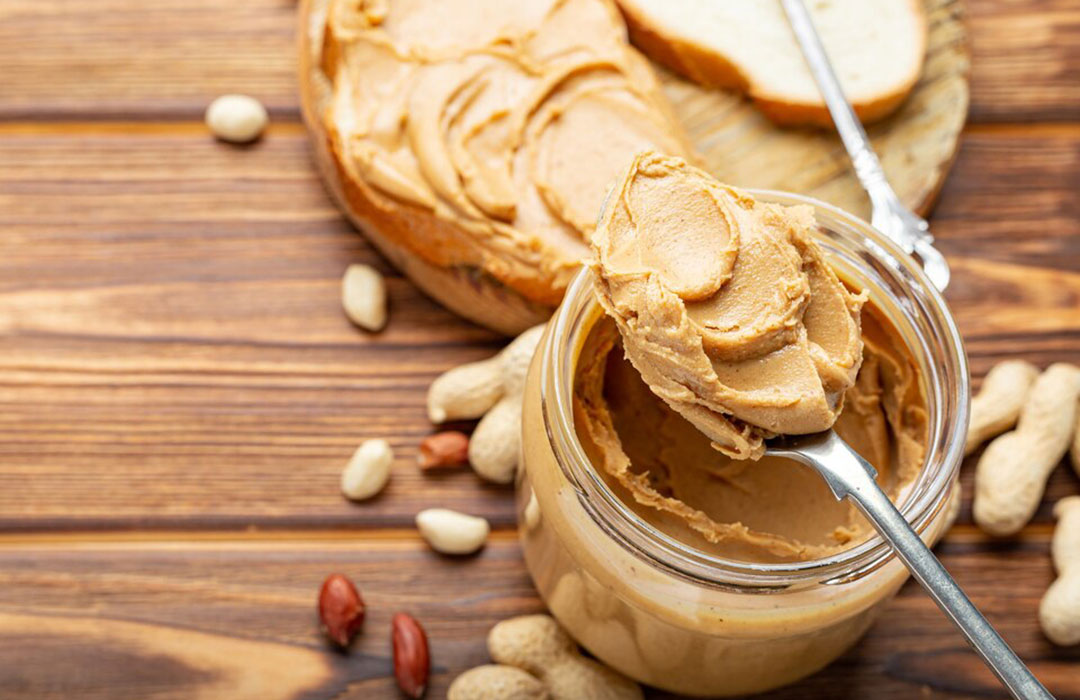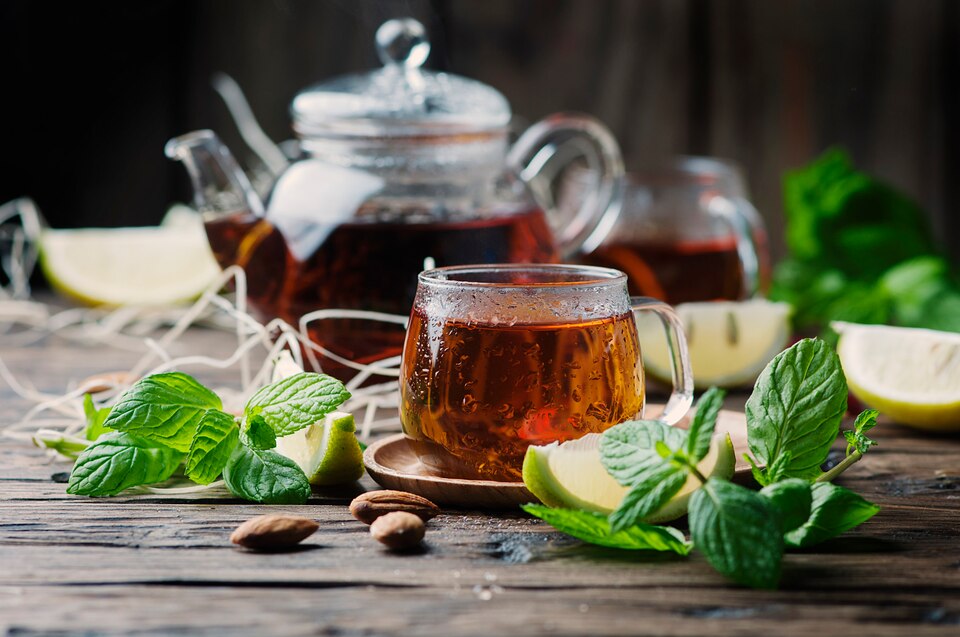Introduction
Diverticulitis is a digestive condition that affects millions of people worldwide. It involves the inflammation or infection of small pouches called diverticula in the colon’s lining. If you have been diagnosed with diverticulitis, you may wonder about your dietary options, including peanut butter consumption. This comprehensive guide will delve into diverticulitis and peanut butter, shedding light on safe food choices, potential risks, and suitable alternatives. Let’s explore how you can make informed decisions to manage your condition effectively.
Understanding Diverticulitis
Diverticulitis is a condition characterized by the development of small pouches, known as diverticula, in the colon. These pouches can become inflamed or infected, leading to discomfort and various symptoms. Diverticulitis is often caused by a low-fiber diet, which can contribute to increased pressure in the colon, leading to the formation of diverticula. It is important to understand the impact of diet on this condition to manage and prevent flare-ups effectively.
What are the risk factors triggering the development of diverticulitis?
Diverticulitis is a condition that occurs when small pouches, known as diverticula, form in the walls of the colon and become inflamed or infected. Several risk factors can contribute to the development of diverticulitis. One of the primary factors is age, as the risk tends to increase with advancing age. A diet low in fiber is another significant risk factor, as it can lead to constipation and increased pressure in the colon, promoting the formation of diverticula. Other risk factors include obesity, lack of physical activity, smoking, and a family history of diverticular disease. Understanding these risk factors is essential for taking proactive measures to prevent or manage diverticulitis effectively.
What are the effects of diverticulitis?
Diverticulitis can lead to various effects and symptoms, ranging from mild discomfort to severe complications. Common symptoms include abdominal pain, especially in the lower left side, bloating, changes in bowel habits, and fever. In some cases, diverticulitis can cause complications such as abscess formation, perforation of the colon, or even peritonitis (inflammation of the abdominal lining). It is crucial to recognize these effects early on and seek medical attention promptly to prevent the condition from worsening.
Diverticulitis and Peanut Butter: An Overview
Peanut butter is a popular food enjoyed by many. However, certain considerations need to be made when it comes to diverticulitis. Peanut butter is high in fat and can be challenging for the digestive system to break down, potentially triggering symptoms in individuals with diverticulitis. It is essential to understand the impact of peanut butter on your specific condition and make informed choices.
Is Peanut Butter Safe for Diverticulitis?
While peanut butter is generally safe for individuals without diverticulitis, it may pose challenges for those with it. The high-fat content in peanut butter can be difficult to digest and may exacerbate symptoms such as abdominal pain, bloating, and diarrhea. It is advisable to exercise caution when consuming peanut butter if you have diverticulitis.
Eating Peanut Butter With Diverticulitis
Peanut butter is a popular and delicious food choice enjoyed by many, but its consumption with diverticulitis has been a topic of discussion. Some individuals worry that peanut butter’s small, hard particles may aggravate diverticula and cause discomfort. However, in most cases, peanut butter is well-tolerated by individuals with diverticulitis, especially during periods of remission. It is a good protein and healthy fats source, making it a suitable addition to a diverticulitis-friendly diet. Individual tolerance may vary, so it is essential to listen to your body and consult with a healthcare professional if you have any concerns.
Impact of Peanut Butter on Diverticulitis Symptoms
While peanut butter is generally considered safe for most people with diverticulitis, it is essential to be mindful of its potential impact on symptoms. Some individuals may experience increased bloating or gas after consuming peanut butter. You may want to limit your intake or try alternative options if you notice any adverse effects. Remember that each person’s digestive system is unique, and finding the right balance of foods that work for you is key to managing diverticulitis effectively.
Nutritional Profile of Peanut Butter for Diverticulitis
Peanut butter offers several nutritional benefits that can be advantageous for individuals with diverticulitis. It is a rich protein source for tissue repair and overall health. Additionally, it contains healthy monounsaturated fats, which can be heart-friendly and beneficial for managing inflammation. Peanut butter also provides essential vitamins and minerals, including vitamin E, magnesium, and potassium. When choosing peanut butter, choose varieties with minimal added sugars and unhealthy fats, and consider natural or organic options for the best nutritional profile.
Alternatives to Peanut Butter for Diverticulitis Patients
If you love the taste of peanut butter but want to avoid potential discomfort, there are several alternatives you can consider. Here are some safe and delicious options for diverticulitis patients:
Almond Butter
Almond butter is a nutritious alternative to peanut butter. It is rich in healthy fats, protein, and fiber. Almonds have a softer texture than peanuts, making almond butter easier to digest for individuals with diverticulitis.
Cashew Butter
Cashew butter is another excellent choice for diverticulitis patients. Cashews are lower in fiber than other nuts, which can benefit individuals with sensitive digestive systems. Cashew butter provides a creamy and flavorful alternative to peanut butter.
Sunflower Seed Butter
Sunflower seed butter is a fantastic option for those with diverticulitis. It offers a similar texture and taste to peanut butter but is made from sunflower seeds instead. Sunflower seed butter is typically lower in fat and higher in fiber than peanut butter, making it a gentle choice for your digestive system.
Tahini
Tahini is a paste made from ground sesame seeds. It is widely used in Mediterranean and Middle Eastern cuisines. Tahini is packed with healthy fats, protein, and minerals. It has a rich, nutty flavor and can be a versatile ingredient in various dishes.
Hummus
Hummus is a popular Middle Eastern dip made from chickpeas, tahini, olive oil, lemon juice, and garlic. It is a delicious and nutritious alternative to peanut butter. Hummus is high in fiber and protein, making it a satisfying choice for diverticulitis patients.
Remember to check the labels of these alternatives to ensure they do not contain any added ingredients that may trigger your symptoms. It is always a good idea to consult with your healthcare provider or a registered dietitian before significantly changing your diet.
What to Eat During a Diverticulitis Flare-Up
During a diverticulitis flare-up, it is crucial to follow a specific diet to ease symptoms and promote healing. A clear liquid diet is typically recommended, including broth, gelatin, and clear fruit juices. As symptoms improve, a low-fiber diet is gradually introduced, featuring easily digestible foods like cooked vegetables, fruits without skins or seeds, lean proteins, and refined grains. The goal is to allow the colon to heal without putting excessive strain on it. Always follow your healthcare provider’s guidance on dietary recommendations during a flare-up.
Foods to Avoid After Diverticulitis Attack
After recovering from a diverticulitis attack, certain foods should be avoided temporarily to prevent any potential irritation to the healing colon. These foods often include nuts, seeds, popcorn, whole grains, and raw fruits and vegetables. As the inflammation subsides, these foods can be gradually reintroduced in a structured manner, but it is essential to do so under the guidance of a healthcare professional. Pay attention to how your body responds to each food, as individual tolerances may vary.
Note: It’s important to consult with a healthcare professional or a registered dietitian before making any significant dietary changes, especially if you have diverticulitis or any other medical condition.
Other Foods to Avoid with Diverticulitis
In addition to peanut butter, there are other foods that individuals with diverticulitis should avoid or consume in moderation. These include:
Nuts and Seeds
While alternatives like almond butter and sunflower seed butter may suit some, whole nuts and seeds should be avoided during diverticulitis flare-ups. The tiny particles can get lodged in the diverticula, potentially causing irritation and inflammation.
Popcorn
Popcorn is a high-fiber snack that can be problematic for diverticulitis patients. The rigid hulls of popcorn kernels can get trapped in the diverticula and lead to discomfort. It is best to avoid popcorn until your symptoms have subsided.
Spicy Foods
Spicy foods can irritate the digestive system and potentially trigger diverticulitis symptoms. Limiting or avoiding foods containing chili peppers, hot sauces, and excessive spices is advisable.
Red Meat
Red meat, especially fatty cuts, can be challenging to digest and may worsen symptoms. Avoid leaner protein sources such as poultry, fish, and tofu.
Refined Grains
Refined grains like white bread, white rice, and pasta made from refined flour lack fiber and can contribute to constipation. Instead, choose whole grains such as whole wheat bread, brown rice, and whole grain pasta for their higher fiber content.
Best Food Choices for Diverticulitis Management
To promote digestive health and reduce the risk of diverticulitis flare-ups, include the following foods in your diet:
High-Fiber Fruits
Fruits such as apples, pears, berries, and oranges are excellent sources of fiber. They help soften the stool and support regular bowel movements.
Vegetables
Aim for a colorful variety of vegetables, including leafy greens, broccoli, carrots, and sweet potatoes. These vegetables provide essential nutrients and fiber to support digestive health.
Whole Grains
Choose whole grains like oats, quinoa, brown rice, and whole wheat bread. These grains are rich in fiber and can help prevent constipation.
Legumes
Legumes such as lentils, chickpeas, and black beans are high in fiber and protein. They provide a delightful and nutritious addition to meals.
Yogurt and Probiotic Foods
Yogurt and other fermented foods like sauerkraut and kimchi contain beneficial bacteria that support a healthy gut. Probiotics can help maintain a balanced digestive system.
Lean Protein
Opt for lean protein sources such as skinless poultry, fish, eggs, and tofu. These options are easier to digest compared to fatty cuts of meat.
Healthy Fats
Incorporate sources of healthy fats into your diet, such as avocados, olive oil, and nuts, in moderation. These fats provide essential nutrients and promote satiety.
Always gradually increase your fiber intake and drink adequate water to prevent bloating and discomfort. It is crucial to listen to your body and adjust your diet based on your needs.
The Role of Diet in Diverticulitis Management
Diet plays a crucial role in the management of diverticulitis. A high-fiber diet is commonly recommended to promote regular bowel movements and prevent complications. Foods rich in fiber can help soften the stool and reduce the strain on the colon. Additionally, fiber aids in maintaining a healthy gut microbiome, which is essential for overall digestive health. Consuming various fruits, vegetables, whole grains, and legumes can significantly contribute to diverticulitis management.
Cooking Techniques for Diverticulitis Patients
The way you prepare your food can also impact your diverticulitis symptoms. Consider the following cooking techniques:
Steaming
Steaming vegetables helps retain nutrients while making them easier to chew and digest. Steaming is a gentle cooking method that can help minimize discomfort.
Boiling
Boiling is another suitable technique for cooking vegetables and grains. It softens the texture, making them easier to digest.
Grilling or Baking Lean Protein
Grilling or baking lean protein sources like chicken or fish can produce tender and flavorful dishes. These methods require minimal added fats, making them healthier options.
Blending or Pureeing
Blending or pureeing foods can benefit individuals with severe diverticulitis symptoms. This technique creates a smooth texture that is easier to consume and digest.
Experiment with different cooking methods to find what works best for you. It is essential to pay attention to how your body responds to certain foods and cooking techniques.
Staying Hydrated: Importance and Tips
Proper hydration is essential for maintaining digestive health, especially for individuals with diverticulitis. Here are some tips to help you stay hydrated:
Drink Water Throughout the Day
Make it a habit to drink water regularly. Aim for at least eight glasses of water per day. Carry a water bottle to ensure you can access water wherever you go.
Infuse Water with Fruits or Herbs
If plain water feels boring, try infusing it with slices of fruits like lemon, cucumber, or berries. You can also add herbs like mint or basil for a refreshing twist.
Consume Hydrating Foods
Many fruits and vegetables have high water content. Include hydrating foods like watermelon, cucumbers, oranges, and grapes.
Limit Alcohol and Caffeine
Alcohol and caffeine can dehydrate the body. Limit caffeinated beverages like coffee and tea, and enjoy alcoholic beverages in moderation.
Remember that your fluid needs vary depending on activity level, climate, and overall health. Pay attention to your body’s signals and increase your fluid intake if necessary.
Managing Diverticulitis Symptoms Naturally
In addition to dietary adjustments, there are natural ways to manage diverticulitis symptoms. Consider the following:
Regular Exercise
Engaging in regular physical activity can promote healthy digestion and prevent constipation. Most days of the week, aim for at least 30 minutes of moderate exercise, such as brisk walking, cycling, or swimming.
Stress Management
Stress can exacerbate digestive symptoms. Explore stress-management techniques like meditation, deep breathing exercises, yoga, or engaging in hobbies you enjoy.
Adequate Rest
Getting enough sleep and rest is crucial for overall digestive health. Aim for 7-8 hours of quality sleep each night.
Fiber Supplements
Fiber supplements may be an option if it is challenging to meet your daily fiber requirements through diet alone. Consult with your healthcare provider or a registered dietitian to determine the appropriate supplement.
Regular Bowel Habits
Establishing regular bowel habits can help prevent constipation and minimize discomfort. Try to maintain a consistent schedule for bowel movements by allocating time for them each day.
Avoid Smoking
Smoking has numerous adverse effects on digestive health. Quitting smoking can improve overall health and alleviate symptoms associated with diverticulitis.
Consider your healthcare provider before making significant lifestyle changes or starting any new exercise or supplementation regimen.
Frequently Asked Questions (FAQs)
-
Can I Eat Peanut Butter If I Have Diverticulitis?
Peanut butter can be challenging to digest and may trigger symptoms in individuals with diverticulitis. It is advisable to exercise caution and consider alternatives like almond butter or sunflower seed butter.
-
Are There Other Foods I Should Avoid With Diverticulitis?
Certain foods should be avoided or consumed in moderation to minimize symptoms. These include nuts, seeds, popcorn, spicy foods, and red meat. Refined grains should also be limited.
-
What Are The Best Food Choices For Diverticulitis Management?
High-fiber fruits, vegetables, whole grains, legumes, yogurt, and lean proteins are excellent food choices for diverticulitis management. These foods promote regular bowel movements and support digestive health.
-
How Can I Stay Hydrated With Diverticulitis?
It is important to drink water throughout the day and consume hydrating foods. Infusing water with fruits or herbs can add flavor and encourage hydration. Limiting alcohol and caffeine intake is also advised.
-
Can Natural Remedies Help Manage Diverticulitis Symptoms?
Natural remedies like regular exercise, stress management, adequate rest, and fiber supplements may contribute to symptom management. However, consulting with a healthcare provider for personalized guidance is essential.
-
Can Diverticulitis Be Cured?
While diverticulitis cannot be cured, it can be effectively managed through dietary and lifestyle modifications. Working closely with healthcare professionals can help minimize symptoms and prevent complications.
Q: Can I eat peanut butter if I have diverticulitis?
A: Peanut butter can be challenging to digest and may trigger symptoms in individuals with diverticulitis. It is advisable to exercise caution and consider alternatives like almond butter or sunflower seed butter.
Q: Are there other foods I should avoid with diverticulitis?
A: Certain foods should be avoided or consumed in moderation to minimize symptoms. These include nuts, seeds, popcorn, spicy foods, and red meat. Refined grains should also be limited.
Q: What are the best food choices for diverticulitis management?
A: High-fiber fruits, vegetables, whole grains, legumes, yogurt, and lean proteins are excellent food choices for diverticulitis management. These foods promote regular bowel movements and support digestive health.
Q: How can I stay hydrated with diverticulitis?
A: It is important to drink water throughout the day and consume hydrating foods. Infusing water with fruits or herbs can add flavor and encourage hydration. Limiting alcohol and caffeine intake is also advised.
Q: Can natural remedies help manage diverticulitis symptoms?
A: Natural remedies like regular exercise, stress management, adequate rest, and fiber supplements may contribute to symptom management. However, consulting with a healthcare provider for personalized guidance is essential.
Q: Can diverticulitis be cured?
A: While diverticulitis cannot be cured, it can be effectively managed through dietary and lifestyle modifications. Working closely with healthcare professionals can help minimize symptoms and prevent complications.
Conclusion
In conclusion, managing diverticulitis involves making informed food choices to support digestive health and prevent flare-ups. While peanut butter may pose challenges for individuals with diverticulitis due to its high-fat content, plenty of safe alternatives are available. Remember to prioritize a high-fiber diet, stay hydrated, and explore natural remedies to manage symptoms. By adopting a comprehensive approach to your diet and lifestyle, you can effectively manage diverticulitis and enjoy a healthier digestive system.




